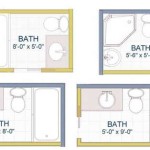Sewer Pump for Basement Bathroom: A Comprehensive Guide
Installing a bathroom in your basement can be a great way to add value to your home and create additional living space. However, if your basement is below the level of the municipal sewer line, you will need to install a sewer pump to lift the wastewater up to the sewer line. Sewer pumps are essential for ensuring that your basement bathroom functions properly and prevents sewage backups.
Types of Sewer Pumps
There are two main types of sewer pumps: submersible pumps and non-submersible pumps.
- Submersible pumps are designed to be installed below the water level, completely submerged in the wastewater. They are more powerful and efficient than non-submersible pumps, but they are also more expensive.
- Non-submersible pumps are installed above the water level, outside of the wastewater. They are less powerful and efficient than submersible pumps, but they are also less expensive.
Factors to Consider When Choosing a Sewer Pump
When choosing a sewer pump, you need to consider several factors, including:
- The size of your bathroom. The size of your bathroom will determine the size of the sewer pump you need.
- The height of the lift. The height of the lift is the vertical distance from the outlet of the sewer pump to the sewer line.
- The flow rate. The flow rate is the amount of wastewater that the sewer pump can handle per minute.
- The type of wastewater. Some sewer pumps are designed to handle only wastewater from toilets, while others can handle wastewater from sinks, showers, and other fixtures.
Installing a Sewer Pump
Installing a sewer pump is a job that is best left to a professional plumber. However, if you are a do-it-yourselfer, you can follow these steps:
- Choose a location for the sewer pump. The sewer pump should be located in a dry, accessible location near the sewer line.
- Install the sewer pump. Follow the manufacturer's instructions for installing the sewer pump.
- Connect the sewer pump to the sewer line. Use a flexible hose to connect the outlet of the sewer pump to the sewer line.
- Connect the sewer pump to the electrical circuit. The sewer pump should be connected to a dedicated electrical circuit.
- Test the sewer pump. Once the sewer pump is installed, test it by running water through the bathroom fixtures.
- Check the sewer pump regularly for any signs of damage or wear
- Clean the sewer pump impeller and housing
- Test the sewer pump every month by running water through the bathroom fixtures
- Have the sewer pump serviced by a professional plumber every year
Maintaining a Sewer Pump
To ensure that your sewer pump is working properly, you should maintain it regularly. Here are some tips for maintaining your sewer pump:
Conclusion
A sewer pump is an essential component of any basement bathroom. By following the tips in this article, you can choose, install, and maintain a sewer pump that will keep your basement bathroom functioning properly for years to come.

Everbilt 1 2 Hp Upflush System Sewage Ejector Pump Kit Sw07501tc The Home

Basement Plumbing For Ejector Pump Up To Main Sewage Line Terry Love Advice Remodel Diy Pro Pumps

Why You Have A Mini Septic Tank In Your Basement Gold Key Home Inspections

Sewage Pump Buyer S Guide How To Pick The Perfect

Everbilt 3 4 Hp Sewage Ejector Pump Ese60w Hd The Home

Sewage Sump Pump Installation Plumbing Help

What Is A Septic Ejector Pump How Does It Work The Original Plumber

Superior Pump 1 2 Hp Sewage Ejector Kit With Basin 93020u The Home

Sewage Ejector Pumps Explained Strongman

Sewage Ejector Pump Maintenance Bieg Plumbing







